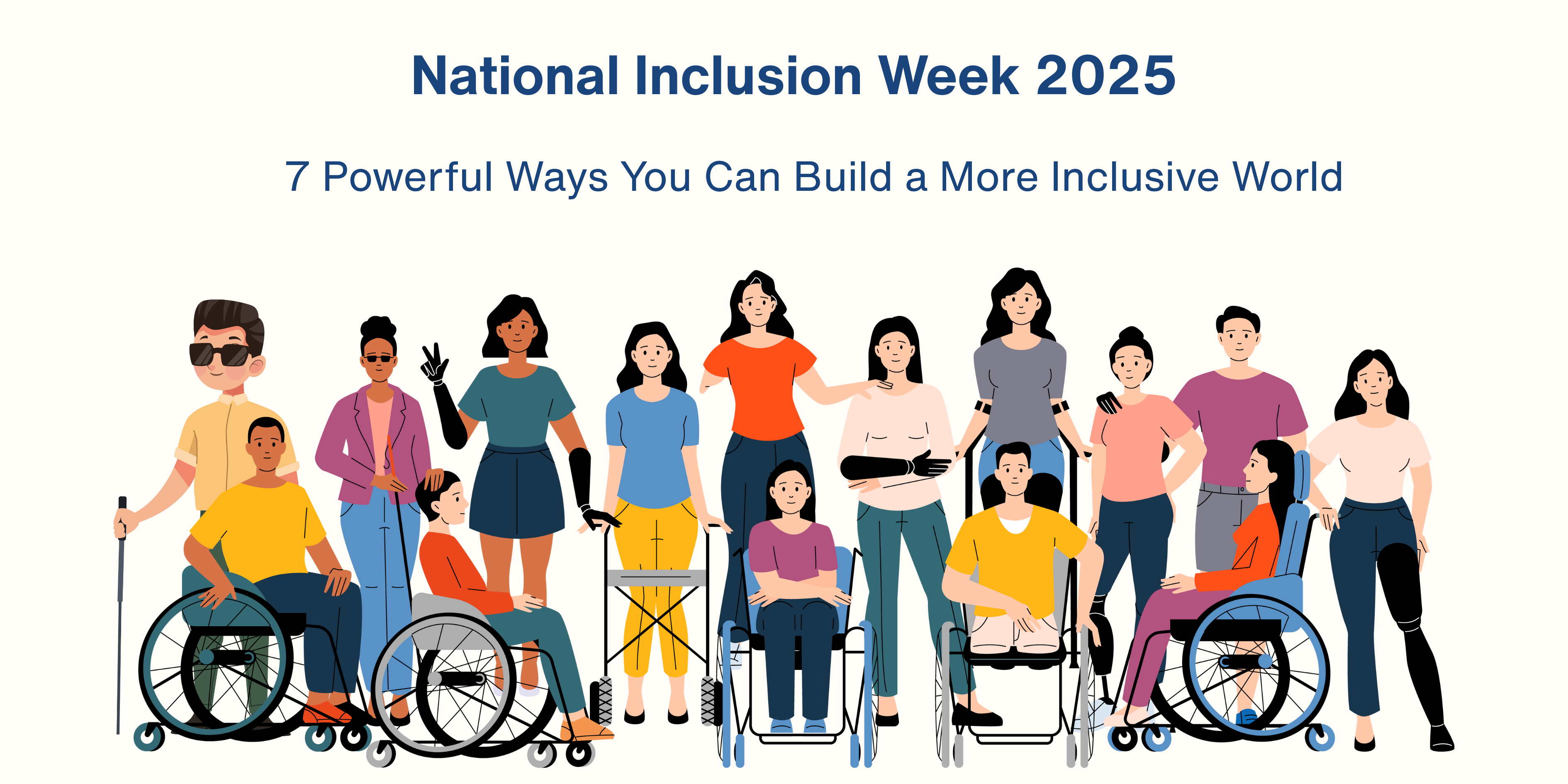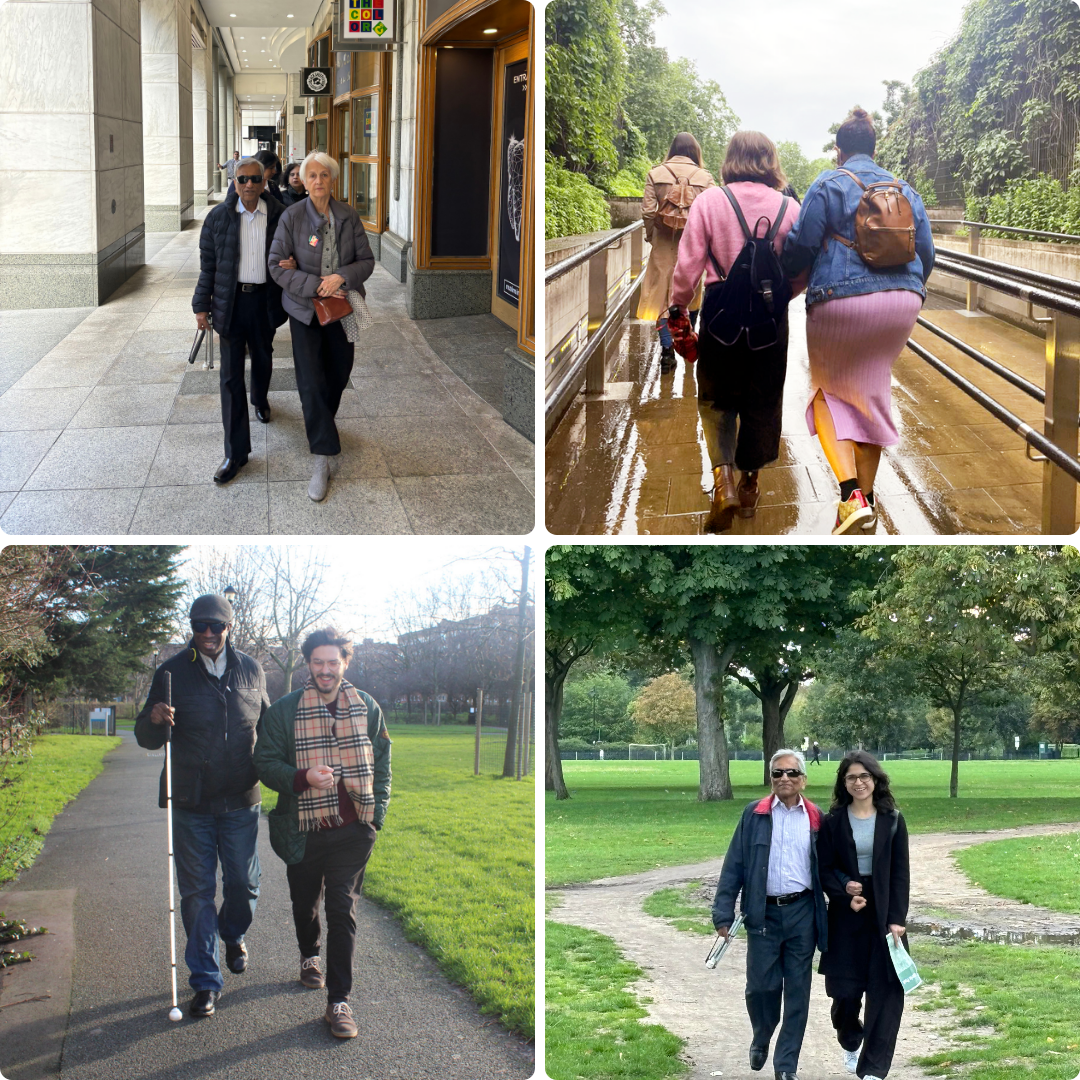National Inclusion Week 2025: 7 Powerful Ways You Can Build a More Inclusive World

Inclusion isn’t just a theme — it’s a daily commitment to fairness, empathy, and accessibility.
National Inclusion Week (September 15–21, 2025) invites individuals, workplaces, and communities to celebrate differences and take action. Whether you're an individual, teacher, employer, or ally, this week offers the perfect chance to make real, visible change.
Here are 7 meaningful and practical ways you can build a more inclusive world — starting now.
1. Learn What You Don’t Know (Yet)
Inclusion begins with awareness. Before we can create inclusive spaces, we must understand the lived experiences of others — especially those with disabilities or from underrepresented communities.
Read
- “Haben: The Deafblind Woman Who Conquered Harvard Law” by Haben Girma is a powerful memoir of resilience and advocacy.
- “Disability Visibility” edited by Alice Wong offers essays by disabled activists, artists, and thinkers.
Listen
- “Access All” by BBC Sounds explores life as a disabled person in the UK.
- “Ouch!” podcast dives into disability topics with humor and honesty.
Follow
- @ShaniDhanda – disability inclusion specialist and global speaker
- @BlindishLatina – shares experiences navigating life as a blind woman of colour
- @mollyburkeofficial - A blind content creator, speaker, and guide dog advocate who shares accessible beauty tips and life experiences.
- @lucyedwardsofficial - A blind journalist and disability advocate creating viral content around accessibility, makeup, and independence.
“Inclusion starts when we pause to unlearn what we think we know.”
2. Use Inclusive Language — Every Day
Words matter. They can include, or they can alienate. Inclusive language avoids stereotypes and centers the person, not the condition.
- Say: “Person with a visual impairment” instead of “blind person.”
- Ask: “What pronouns do you use?” instead of assuming.
- Avoid: Phrases like “suffering from” or “confined to a wheelchair.”
Inclusive language guide from Scope UK is a great starting point.
“When in doubt, ask respectfully. Curiosity is kinder than silence.”
3. Make Public Spaces Truly Welcoming
Inclusion is more than a ramp — it's a mindset. Ask yourself:
- Are your entrances accessible to wheelchair users?
- Are there tactile markers or audio announcements for visually impaired people?
- Are event materials available in multiple formats like Braille, captions, or Easy Read?
Example: Travel Hands connects visually impaired people (VIPs) with trained volunteers, called Travel Hands Guides, for safe walks across London — helping VIPs travel confidently and independently.
.webp)
4. Be an Ally in Action — Not Just Words
Allyship is more than a social media post — it’s what you do when no one’s watching.
Volunteer with local disability-led charities like Scope, Thomas Pocklington Trust, or Travel Hands.
Speak up when you witness discrimination.
Step aside so others can lead, especially those with lived experience.
Example: Travel Hands Guides aren’t just volunteers. They are walking advocates — helping VIPs navigate the city while raising awareness through human connection.
5. Embed Inclusion in Your Workplace or School
Inclusion must be built into your systems — not tacked on later.
- Organize disability awareness workshops.
- Review your hiring process for unconscious bias.
- Offer ergonomic workstations or screen readers.
- Launch a DEI (Diversity, Equity & Inclusion) committee.
- Offer accessible training with captions or alternative formats.
- Include disabled people in leadership roles and decision-making.
Example: Microsoft has a Disability Inclusive Hiring Program that helps candidates with disabilities find roles where they can thrive, not just fit in.
In schools, encourage inclusive clubs or invite disabled guest speakers — representation matters early on.
6. Support Inclusive Innovation
Accessibility drives innovation. The best products work for everyone.
Use apps designed with accessibility in mind:
- Be My Eyes – connects blind users with sighted volunteers
- Microsoft Seeing AI – narrates the world using AI
- Travel Hands App – built with features like guided routes, journey sharing, and live updates for visually impaired users.

Leave feedback if a product isn't accessible.
Support brands that embed accessibility into their design — like Mattel’s inclusive Barbie dolls.
7. Just Be There — Small Acts Matter Most
Inclusion doesn’t always require grand gestures.
- Say hi to someone sitting alone.
- Offer to walk with someone who looks unsure.
- Speak up when others talk over a disabled colleague.
- Ask: “Would you like help?” — never assume.
Example: A Travel Hands Guide helped a VIP navigate Oxford Street during busy hours. The VIP said, “It’s not just about reaching a destination. It’s about feeling included in the rhythm of everyday life.”
Final Thoughts: Inclusion Is a Practice, Not a Trend
You don’t need to be an expert to make a difference. Every small action — every conversation, every effort to listen — shapes a more inclusive world.
This National Inclusion Week, choose one of the actions above and commit to it. Because when we walk together, no one gets left behind.
Ready to Walk the Talk?
Become a Travel Hands Volunteer
Share this blog with someone who can make a change
Start a conversation in your community or workplace
Be a part of

